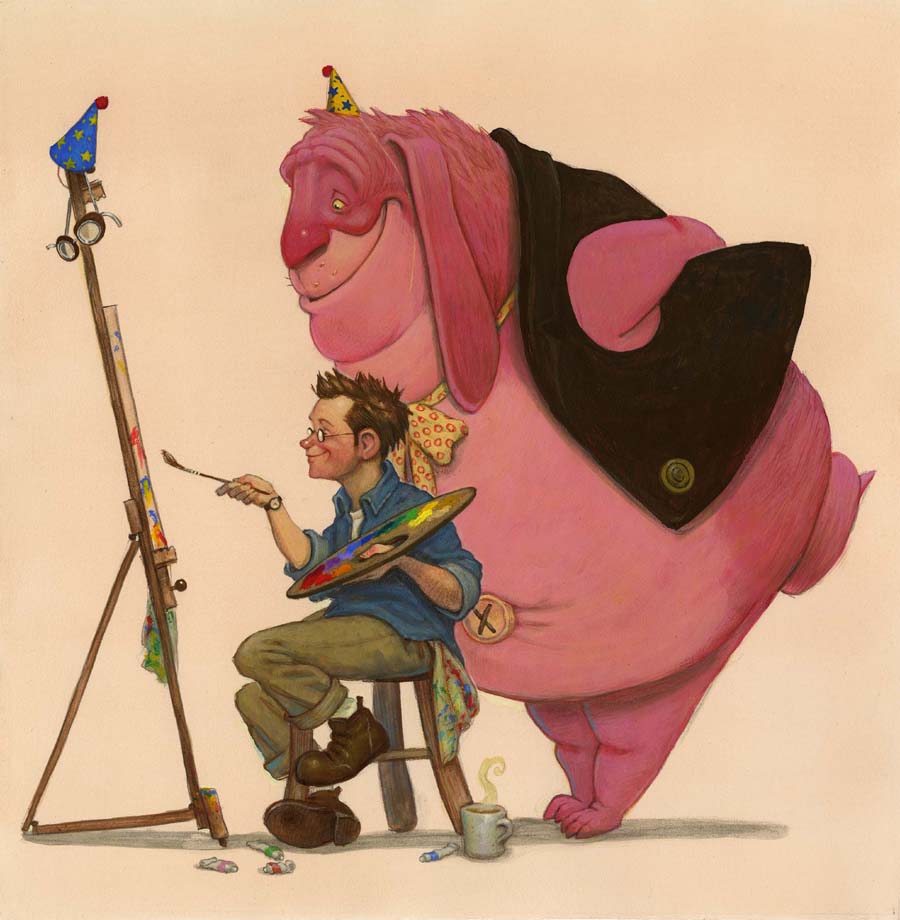
©Tony DiTerlizzi
After the success of Jimmy Zangwow, DiTerlizzi wrote and illustrated Ted, the tale of a boy and his imaginary friend, set in an era around 1960. DiTerlizzi recalls that a key scene from the book was based on an actual event from his childhood. “I remember my parents had just painted my bedroom robin’s egg blue. The following morning, I drew all over those glorious blank blue walls. Mom was furious. ‘Wait until your father comes home!’ she warned. As punishment, I had to spend the afternoon wiping off my drawings.”
The story involves a lonely pre-school boy who has an imaginary friend named Ted. The boy creates Ted because his father is preoccupied with his work and he has no one else with whom to play. The large, boisterous, pink Ted shows up at the boy’s house one week after the boy’s birthday. Father hasn’t had time to play the games he purchased for his son, so Ted fills in. Soon after, the boy and Ted draw on walls, cut the boy’s hair, and fill the house with water. As one might expect, the father does not believe Ted is real and is upset that his son is so convinced. When the boy runs away out of frustration with his father, Ted reveals that he was known as “Ned” to his father when he was the boy’s age. The son, through Ted, helps his father find his long-lost childhood toy — a rusty tin Atomic Blaster.
According to the author, “Ted deals with the responsibility of a father who was once a playful kid, just like his son.” For the thirty-year-old artist, Ted was a way to reconcile the adult he had become with the child he once was. DiTerlizzi remarks that although Ted did not achieve bestseller status, it appears to have been among the most meaningful to his readers over the years.


